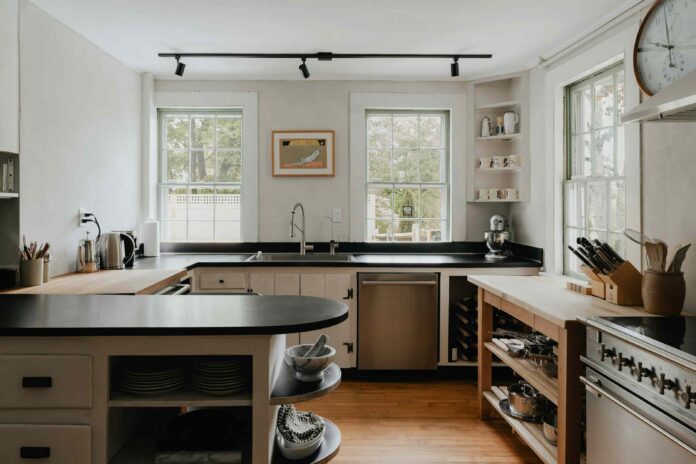Small kitchens can feel cramped easily, and the wrong paint colors can worsen the problem. Designers agree that certain hues actually reduce the sense of space, making the area feel tighter and less inviting. This isn’t just about aesthetics; it impacts how we use and enjoy the kitchen, a central hub for many households.
The Problem With Bold Hues
While a bold kitchen might sound stylish, it can backfire in a smaller space. Sydney Katz, founder of SDK Architecture, explains that “the wrong hue or intensity can dominate the space rather than enhance it.” This means that strong colors can overwhelm limited square footage, making the room feel smaller than it is.
Colors to Avoid
Here are five colors experts advise against using extensively in small kitchens:
- Black: A saturated black lacks depth and can make a small kitchen feel enclosed, particularly when applied to both upper and lower cabinets. Using black as an accent (appliances, small details) is fine, but avoid coating entire surfaces in it.
- Pure White: Surprisingly, all-white kitchens can also shrink a space. Michael Winn, founder of WINN Design + Build, notes that without sufficient natural light, white can appear grayish and clinical, emphasizing the lack of dimension. Plus, the trend is shifting away from all-white kitchens anyway.
- Sage Green: While popular for bringing nature indoors, sage green can flatten depth in a small kitchen with limited daylight or dark cabinetry. The color’s calming effect is lost when paired with poor lighting conditions.
- Red: Kelly Emerson, a senior designer at Aidan Design, calls red “too intense” for smaller kitchens. It’s better suited as an accent color—perhaps in a backsplash or bar stools—rather than dominating the entire space.
- Yellow: Yellow’s undertones shift drastically depending on the lighting. A bright yellow can create visual glare and imbalance, making the kitchen feel busy and hard on the eyes during prolonged use. Like red, it’s best as an accent.
The Takeaway
Choosing the right paint color in a small kitchen isn’t just about preference; it’s about maximizing the sense of space. Avoiding these five colors—black, pure white, sage green, red, and yellow—can help create a more open and inviting kitchen environment. Instead, consider lighter, more neutral tones or strategically placed accent colors to enhance, not constrict, the space.







































